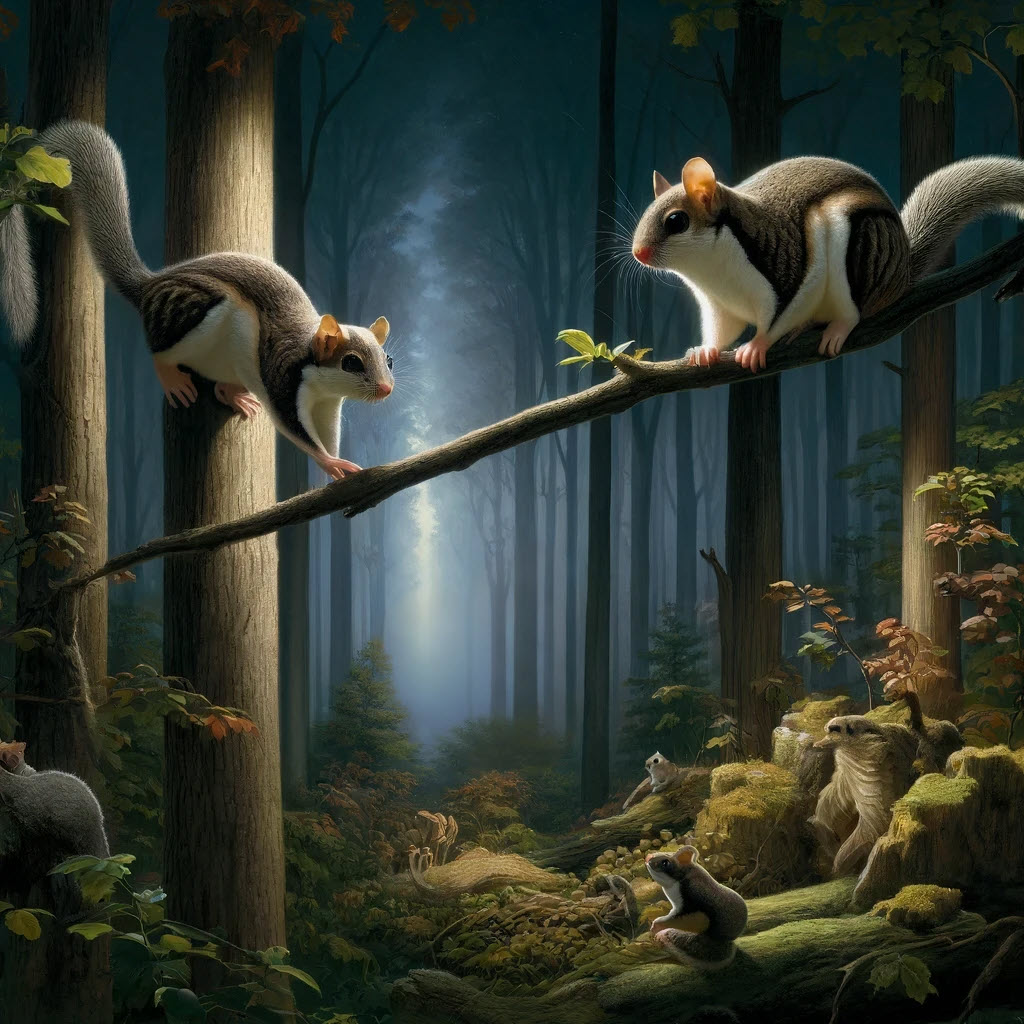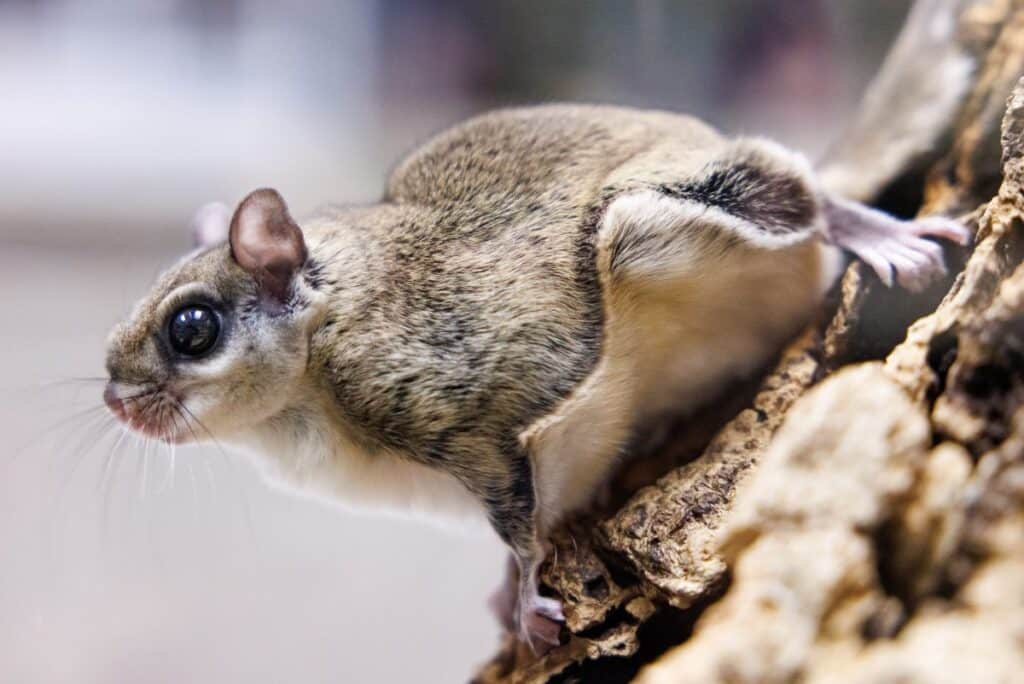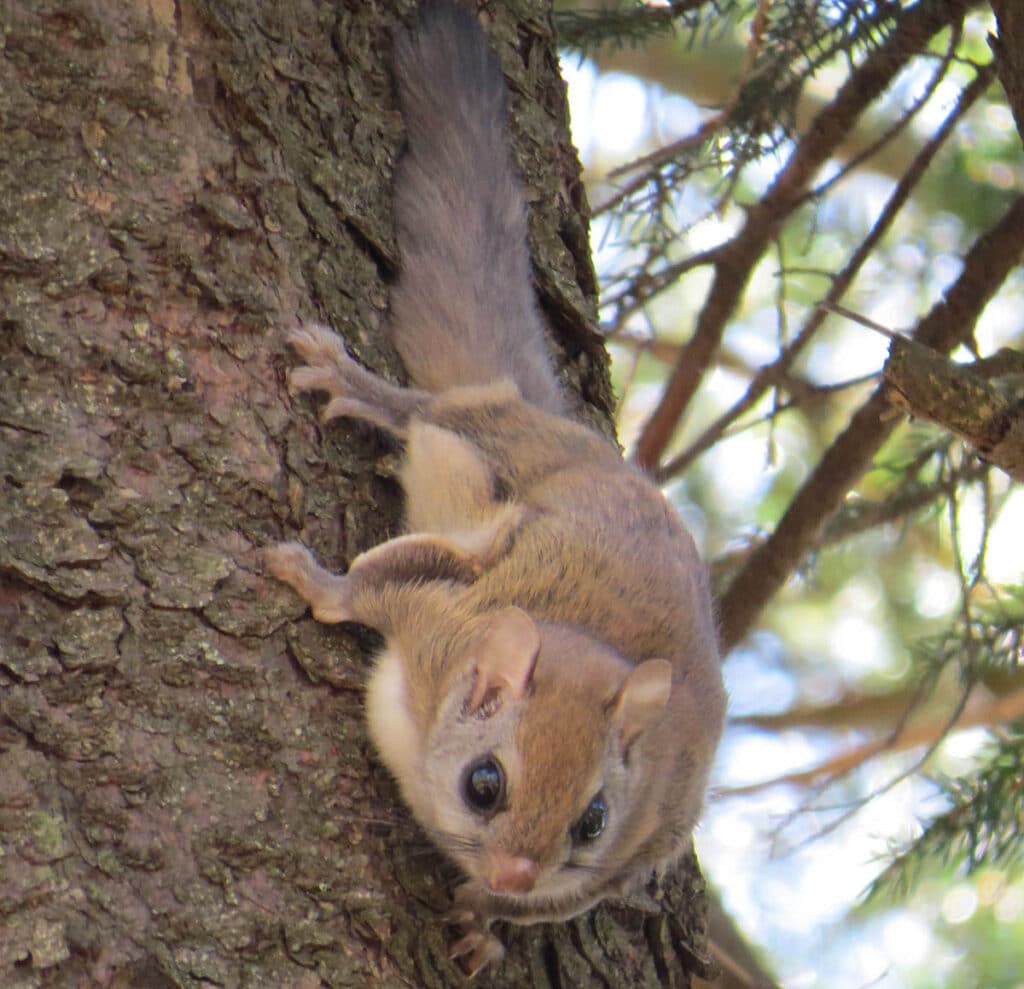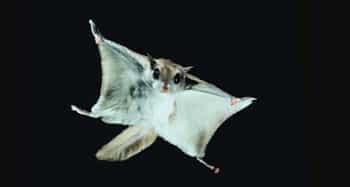
North Carolina is covered in squirrels. Everywhere you look, there is a good chance you will see the Eastern Gray Squirrel, Sciurus carolinensis, one of the most familiar mammals in our state. If you are in or around Brevard, North Carolina, you might see the white variant of the gray squirrel. These all-white or mostly all-white individuals are not albinos, but that does not stop the citizens of Brevard from celebrating White Squirrel Weekend every year. Approximately one-third of the gray squirrel population in their city consists of the white variant, and Brevard is a designated squirrel sanctuary. If you are in the far western tip of the state, the sandhills, or the southeastern coastal plain, you probably will not find white gray squirrels, but you will find Fox Squirrels, Sciurus niger, which are the largest tree squirrels in North America. In the mountains of our state, you may happen upon the Red Squirrel, Tamiasciurus hudsonicus, though there are reports of an isolated population of red squirrels in the Winston-Salem and Greensboro area. Those three species are the squirrels that people see every day, but there are two more species of squirrel in our state that many people never see: the Southern Flying Squirrel and the Northern Flying Squirrel.

Southern Flying Squirrel, Glaucomys volans. Photo courtesy of Riverwatch and the Tennessee Aquarium.
The Southern Flying Squirrel, Glaucomys volans, is the smallest squirrel in our state, weighing up to 100 grams (about 3.53 oz). They are found throughout the Carolinas, except on coastal barrier islands, but, as they are nocturnal, most people never see them. Southern Flying Squirrels do not actually fly like bats or birds: rather, they glide using membranes formed from loose, furred skin extending from their wrists to their ankles. When their arms and legs are fully outstretched, the membranes form a winglike apparatus that is great for gliding from tree to tree. How is that for weird and wonderful? Southern Flying Squirrels use their tails as rudders, and they glide from positions higher in a tree to points further down. They can run, hop, and leap like the other squirrel species, and the best time to see them is by the light of a full moon during a warm summer night. These animals nest in tree cavities, often competing for nesting sites with woodpecker species. This can be a problem for the red-cockaded woodpecker, an endangered bird within our state. Southern Flying Squirrels occupy the same natural spaces as gray and fox squirrels, and, due to their abundance and more aggressive behavior, may be outcompeting the Northern Flying Squirrel.

Carolina Northern Flying Squirrel, Glaucomys sabrinus coloratus. Photo courtesy of Clifton Avery and the NC Wildlife Resources Commission
Northern Flying Squirrels, Glaucomys sabrinus, are larger in size and more richly colored than the southern species. Northern Flying Squirrels tend to have darker brown colored fur on their backs and belly hairs that are gray at the base, not all-white like the belly hairs of the Southern Flying Squirrels. This species is far less common, occurring along the peaks of the Appalachian Mountains, in the Bald Knob area near Mount Mitchell, and in a few locales in the Great Smoky Mountains. In actuality, the Northern Flying Squirrels that we have in North Carolina are a very rare subspecies: Glaucomys sabrinus coloratus, the Carolina Northern Flying Squirrel. A federally listed endangered species, these animals also have a membrane of loose, furred skin that is used as a gliding mechanism. Due to their rarity, far less is known about the Carolina Northern Flying Squirrel, but their natural history appears to be quite similar to that of the Southern Flying Squirrel. They nest in tree cavities and consume many of the same foods, though they have a penchant for lichens and fungi, and do not rely on seeds as much as the southern species. Nocturnal, they are most active just after dusk and right before dawn.

Southern Flying Squirrel mid-glide. Photo courtesy of Dave Maslowski, NC Wildlife Resources Commission, and NCPedia.org
Witnessing a flying squirrel glide through a forest is a sight to behold, and we are fortunate in North Carolina to have two species. Habitat loss is the main threat to their survival, especially for the Carolina Northern Flying Squirrel. This is unfortunate, because without the flying squirrels, these wooded areas might not have ever existed in the first place. Through foraging for and caching away seeds, nuts, and fungi, flying squirrels end up spreading those species around. This becomes vital when tree growth and health is examined more closely. Tree roots form a symbiotic relationship with fungi, where the fungi get sugars from the tree, and the tree is able to better absorb nutrients in the soil with help from the fungi. Without the fungi, the trees would not grow and thrive, so without the aid of flying squirrels, our forests would look a lot different. Even if you never get to see one in the wild, these weird, wonderful, and quite frankly adorable squirrels are notable members of the ecosystem and will hopefully be frolicking and gliding in North Carolina well into the future.
